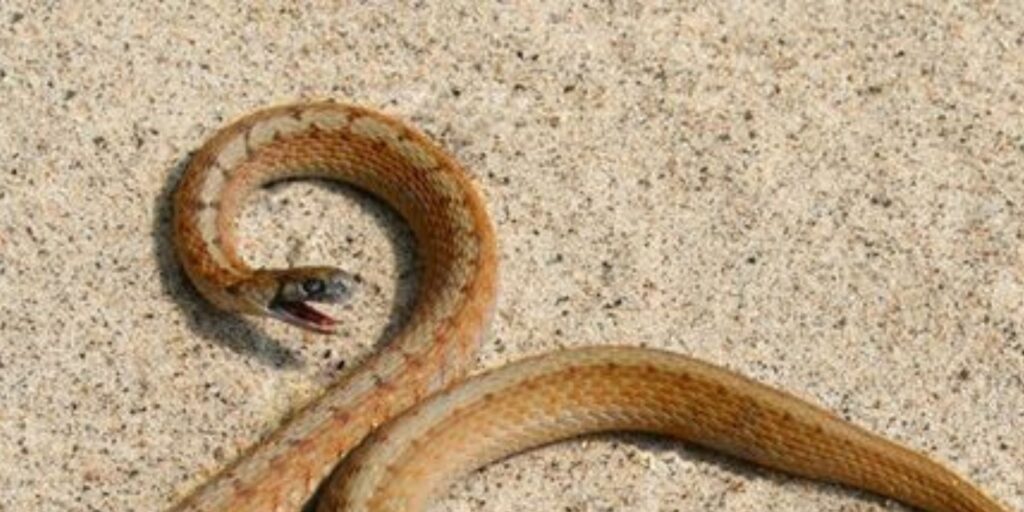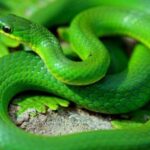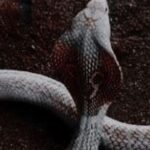Overview
The baby brown snake is one of the most notorious snakes found in Australia, known for its venomous bite and potential danger to humans. Often found in suburban areas, these snakes are not only feared due to their Venom but also because of their small size and camouflaged appearance. Whether you are a wildlife enthusiast, a resident in snake-prone areas, or someone with a general interest in snakes, this article will delve into everything you need to know about the baby brown snake. From its behaviour to its habitat, we’ll provide insights into how to identify, avoid, and manage interactions with these fascinating creatures.
What is a Baby Brown Snake?
A baby brown snake is the juvenile form of the Eastern Brown Snake (Pseudonaja textilis), which is regarded as one of the most venomous snakes in the world. While baby brown snakes are small and difficult to spot, they pack a potent venom that can be lethal if not treated promptly.
The snake is typically born as a hatchling, and its size and behaviour change significantly as it matures. Baby brown snakes are often mistaken for other harmless species, making it essential to understand how to identify them.
Characteristics of the Baby Brown Snake

Understanding the physical characteristics of the baby brown snake is vital for recognizing and differentiating it from other non-venomous snakes. Here’s what you should know about its appearance:
Size and Length
At birth, a baby brown snake is usually between 15 and 25 cm in length. As it matures, it can grow up to 2 meters long. The small size of the baby brown snake makes it difficult to spot, and they often stay hidden in the underbrush, making encounters more likely.
Colour and Patterns
A baby brown snake is light brown to beige in color with darker patterns or markings on its body. These patterns are often irregular and can vary between individuals. The colouration and markings serve as camouflage, helping the snake blend into its environment.
As they grow, their colour becomes more distinct, with adult brown snakes exhibiting a uniform brown or greyish-brown colour. However, the hatchlings’ colouring remains an important factor in identification.
Head Shape and Features
Baby brown snakes have a small, triangular-shaped head that is slightly wider than their body. They may have a darker stripe running down the middle of their head, which can help differentiate them from other non-venomous species.
Venom and Danger of Baby Brown Snakes
While baby brown snakes are small, they possess a venomous bite that can be dangerous to humans and animals. The Venom of the baby brown snake is a potent neurotoxin that can cause paralysis and even death if untreated. Here’s what you need to know about the Venom:
The potency of the Venom
Baby brown snakes produce Venom that is just as dangerous as that of an adult. In fact, the Venom of a baby brown snake can be even more concentrated, making it a serious threat to anyone who comes in contact with it. The Venom attacks the nervous system, causing symptoms such as dizziness, nausea, paralysis, and respiratory failure.
Treatment for a Baby Brown Snake Bite
If a baby brown snake bites you, immediate medical attention is essential. The first step is to stay as calm as possible and apply first aid by applying pressure to the wound and wrapping the affected limb. It’s important not to try and suck out the Venom, as this can worsen the situation. You should then call emergency services to get to the hospital as soon as possible for antivenom treatment.
How to Avoid a Baby Brown Snake Bite

The best way to avoid a baby brown snake bite is to be cautious in snake-prone areas, especially during the warmer months when snakes are more active. Keeping your environment clear of potential hiding spots like tall grass, debris, and piles of rocks will make it more difficult for snakes to settle in your yard. Additionally, wearing thick boots and long pants when walking in areas with known snake activity can offer some protection.
Baby Brown Snake Habitats
Baby brown snakes can be found in a wide range of environments, including:
Suburban Areas
As one of Australia’s most commonly encountered snakes, baby brown snakes are often seen in urban and suburban areas. They may seek shelter in gardens, under houses, or in sheds. Since these areas offer both food sources (such as small rodents) and shelter, they are ideal environments for the young brown snake.
Forests and Woodlands
Beyond human settlements, baby brown snakes can be found in forests and woodlands, particularly in regions where their prey, such as small reptiles and mammals, is abundant. The dense underbrush in these environments provides excellent cover for baby snakes to remain hidden and safe from predators.
Agricultural Land
In rural Australia, agricultural land can also be a common habitat for baby brown snakes. The open spaces and abundance of prey make these areas suitable for young snakes to hunt and grow. However, these areas can pose a risk to farmers and workers, who are more likely to encounter snakes.
Behavioural Traits of the Baby Brown Snakes
While baby brown snakes are dangerous due to their Venom, they are not aggressive by nature. They are more likely to avoid humans than to engage with them. However, their small size and tendency to hide make them particularly difficult to detect.
Feeding Habits
Baby brown snakes primarily feed on small reptiles, amphibians, and rodents. As they mature, their diet may include larger prey such as birds and lizards. The baby brown snake’s hunting behaviour is stealthy, and it will often lie in wait for its prey to come close before striking.
Defensive Behavior
When threatened, a baby brown snake will often try to escape rather than fight. However, if cornered or provoked, they may attempt to bite. Their venomous bite is a defence mechanism, and it’s crucial to avoid startling or handling the snake to prevent a potential bite.
Active Time of Day
Baby brown snakes are primarily nocturnal, although they can be active during the day, especially in cooler weather. They tend to hunt and explore during the night when their prey is also more active. During the day, they may seek shelter in crevices or under debris.
How to Identify a Baby Brown Snakes
Correctly identifying a baby brown snake is critical for staying safe. Here are the key features to look out for:
Tail Characteristics
The tail of a baby brown snake is often thinner and more delicate than the rest of the body. The tail may also be a different colour or shade than the rest of the body, which can be a useful clue in identification.
Behaviour and Movement
A baby brown snake moves quickly and erratically when threatened. If you spot a snake that behaves in this manner, it may be a baby brown snake. Be cautious and avoid approaching the snake.
Location and Habitat
As previously mentioned, baby brown snakes are often found in suburban areas, forests, and agricultural lands. Knowing the location of your sighting can help determine whether it is indeed a baby brown snake.
Precautions and Safety Measures
To stay safe in areas where baby brown snakes are prevalent, follow these precautions:
- Stay Alert
Be aware of your surroundings when walking in areas with tall grass, underbrush, or wooded areas. If you see a snake, do not approach it. Instead, slowly back away.
- Use Snake-Proofing Measures
Take steps to make your garden or home less inviting for snakes. Secure gaps under doors, keep piles of leaves and debris to a minimum and regularly trim your lawn.
- Educate Yourself on First Aid
Knowing how to perform basic first aid for a snake bite can be life-saving. Familiarize yourself with the signs of snake bites and always have emergency contact numbers ready.
Conclusion: Respecting the Baby Brown Snakes

While the baby brown snake is undoubtedly dangerous, it’s important to remember that it is an essential part of the ecosystem. Like all snakes, the baby brown snake plays a vital role in controlling the populations of small animals. Respecting their habitat and behaviour can help reduce negative interactions and ensure that both humans and snakes remain safe.
In summary, the baby brown snake is a small but dangerous creature that requires respect and caution. Identifying it correctly, understanding its behavior, and taking the necessary precautions can help prevent unwanted encounters. Always prioritize safety and contact a professional if you encounter a snake in your vicinity.



